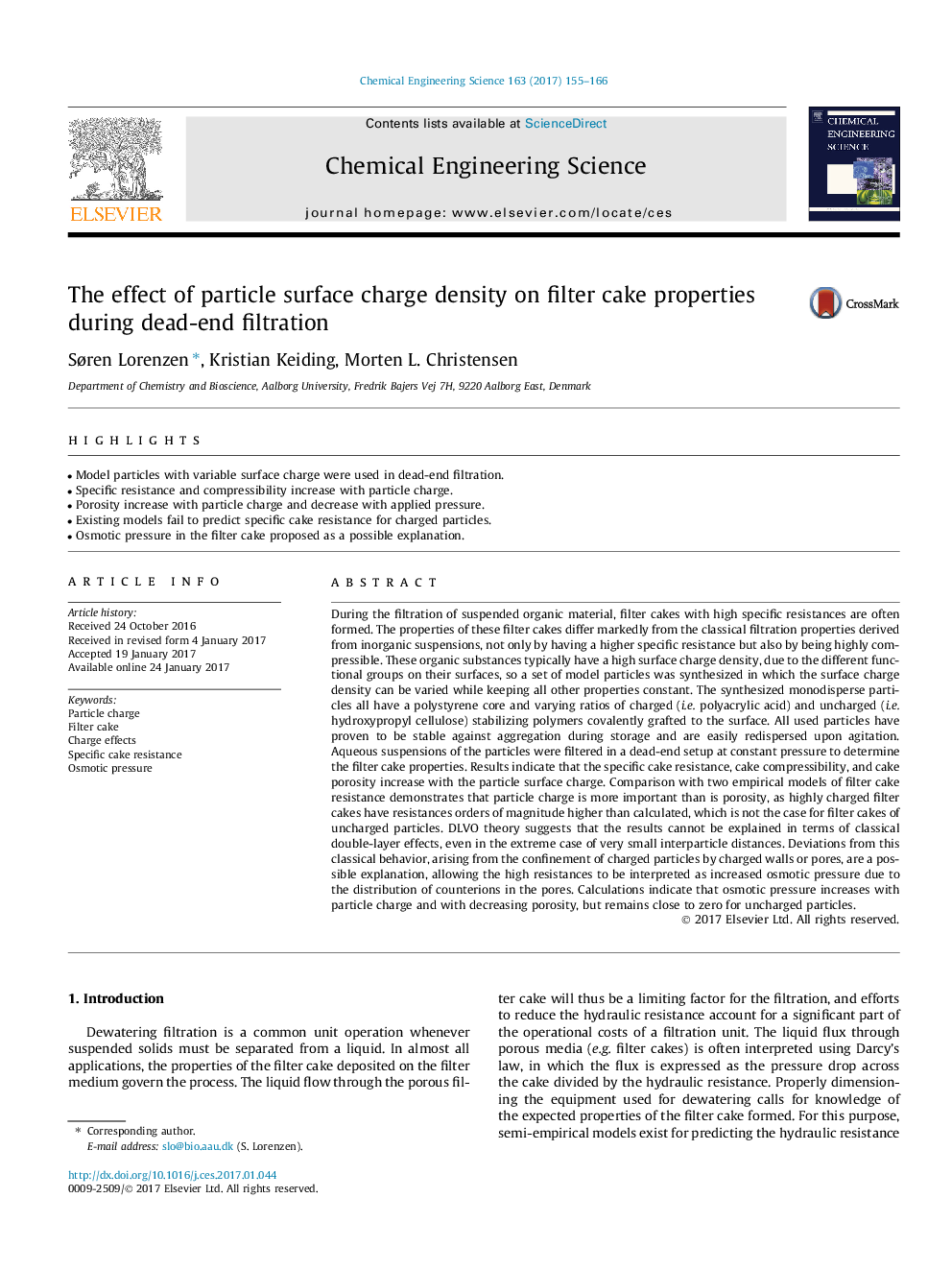| کد مقاله | کد نشریه | سال انتشار | مقاله انگلیسی | نسخه تمام متن |
|---|---|---|---|---|
| 6467581 | 1423256 | 2017 | 12 صفحه PDF | دانلود رایگان |
- Model particles with variable surface charge were used in dead-end filtration.
- Specific resistance and compressibility increase with particle charge.
- Porosity increase with particle charge and decrease with applied pressure.
- Existing models fail to predict specific cake resistance for charged particles.
- Osmotic pressure in the filter cake proposed as a possible explanation.
During the filtration of suspended organic material, filter cakes with high specific resistances are often formed. The properties of these filter cakes differ markedly from the classical filtration properties derived from inorganic suspensions, not only by having a higher specific resistance but also by being highly compressible. These organic substances typically have a high surface charge density, due to the different functional groups on their surfaces, so a set of model particles was synthesized in which the surface charge density can be varied while keeping all other properties constant. The synthesized monodisperse particles all have a polystyrene core and varying ratios of charged (i.e. polyacrylic acid) and uncharged (i.e. hydroxypropyl cellulose) stabilizing polymers covalently grafted to the surface. All used particles have proven to be stable against aggregation during storage and are easily redispersed upon agitation. Aqueous suspensions of the particles were filtered in a dead-end setup at constant pressure to determine the filter cake properties. Results indicate that the specific cake resistance, cake compressibility, and cake porosity increase with the particle surface charge. Comparison with two empirical models of filter cake resistance demonstrates that particle charge is more important than is porosity, as highly charged filter cakes have resistances orders of magnitude higher than calculated, which is not the case for filter cakes of uncharged particles. DLVO theory suggests that the results cannot be explained in terms of classical double-layer effects, even in the extreme case of very small interparticle distances. Deviations from this classical behavior, arising from the confinement of charged particles by charged walls or pores, are a possible explanation, allowing the high resistances to be interpreted as increased osmotic pressure due to the distribution of counterions in the pores. Calculations indicate that osmotic pressure increases with particle charge and with decreasing porosity, but remains close to zero for uncharged particles.
Journal: Chemical Engineering Science - Volume 163, 18 May 2017, Pages 155-166
